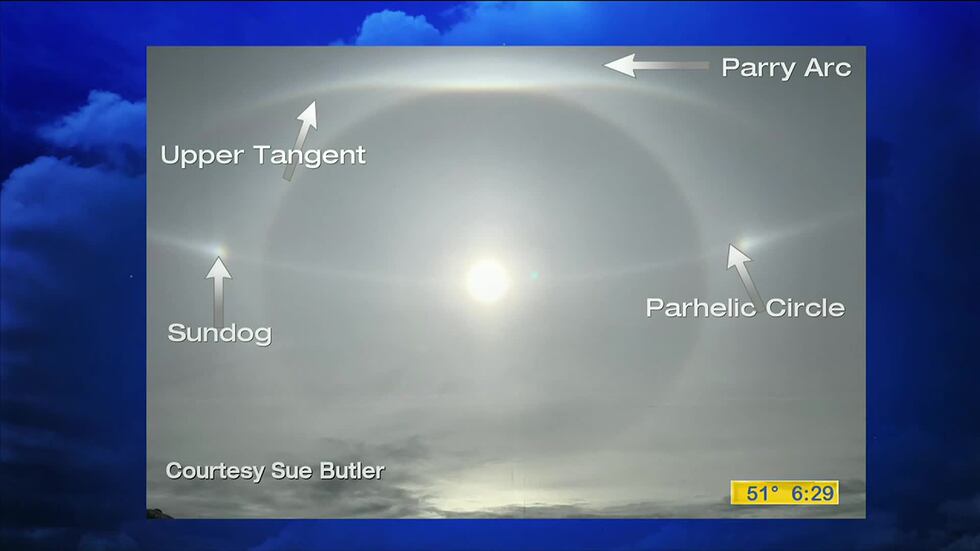Weather Lab: Sundogs and weather prediction

ANCHORAGE, Alaska (KTUU) - Some may remember from previous weather lab lessons how sundogs form, but may not know they can be a sign of incoming weather or that they relate to regular rainbows.
Rainbows and sundogs are formed in somewhat similar ways. Rainbows are created when light passes through water droplets. The light is split into all the different colors.
Sundogs are formed when sunlight passes through hexagonal ice crystals. The crystals act as prisms and bend the light that passes through. When those crystals line up, the result is a sundog.
Another difference between rainbows and sundogs is that rainbows usually indicate the end of rain. Sundogs, on the other hand, are often a warning of approaching rain or snow. The ancient Greeks used sundogs as fairly accurate rain forecasters. The ice crystals that form the sundogs also make up cirrus clouds which are typically a precursor to rain or snow.
Another light arc one might see is the Parry arc, a parhelic circle, and a full halo. They are all formed in basically the same fashion as sundogs but the shape of the ice crystal and which face gets hit by the sunlight creates the kind of halos people see.
The Parry arc was first identified in 1820 by Sir William Edward Parry during one of his Arctic expeditions in search for the Northwest Passage.

This photo by Susan Butler has many of the halos. It’s rare to see all those different halos, but amazing when it happens.
Copyright 2021 KTUU. All rights reserved.









